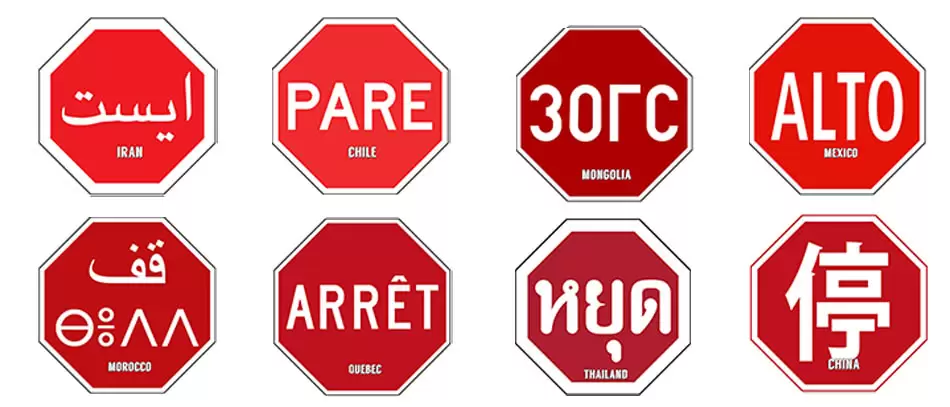You took French in school, right?
We all did.
Le stylo de ma tante est sur la table.
Flocons de cornflakes.
And, for most of us, that’s about where it ended.
Given the instruction we received, it’s surprising how few of us can truly manage in French. Then again, this outcome is entirely predictable. Apparently the same “lose it, or use it” principles that govern upper body strength and abdominal muscles apply to language proficiency.
Le stylo de ma tante est sur la table.
I took a few French classes in university. I used to be able to conduct conversations in French. Disuse eroded that conversational capacity and fear of sounding foolish erased the remainder. I can still understand what people are saying but only if they speak slowly enough. The French, malheureusement, never speak slowly enough.

I earned deep bows from my kids when I conducted a complicated conversation with the driver who rear-ended us in Monte Carlo. I remember the moment well. I wasn’t thinking, ‘Damn, we just got rear-ended”, I was thinking, “Damn, I’m going to have to speak French”. But I managed. The kids still bring it up. And when they don’t, I do.
Upon graduating, my son headed off to Spain. He did his degree in Spanish. He’s fluent in Spanish and Catalonian. He gets by in Portuguese, French and Italian. At least, that’s what he tells me. How would I know? If you don’t speak the language, how can you truly assess fluency? I once got a Russian waiter to hold a fake conversation with me in Russian simply to impress a suitor. I was all, “Pravda, nyet, nyet, wodka, do syidaniya” and my date was none the wiser. He still tells people that I’m fluent in Russian.
Europe is brimming with people who speak more than one language.
Europe is brimming with people who speak more than one language. In 2016, the statistics company, Eurostat, found that 80 percent of the adult, working-age population of the European Union with a tertiary level of education knew at least one foreign language. These figures are self-reported and, as you’ve learned from my display of Russian proficiency, perhaps not entirely reliable.

There’s no consistent definition of what qualifies as a polyglot. The term polyglot derives from both the Greek and French, meaning many tongues. Generally speaking, if a person has a command of three or four languages, they’re considered to be a polyglot. Beyond that, there’s a classification for people who speak a multitude of languages. They’re classified as hyperpolyglots. Social media and the internet has spawned a new breed of polyglots. Whereas previous generations had to rely upon books, local exposure to native speakers of foreign languages or overseas travel to immerse oneself in a new language, today, the option of watching foreign news or movies online provides good opportunities to master a new language.
… polyglot derives from both the Greek and French, meaning many tongues.
On this side of the pond, people turn to apps and various online programs to learn how to ask for the wine list in a new language. We all have friends who now insist on going to Chinese restaurants so that they can utilize their fledgling Mandarin. There are countless language learning opportunities online. The best known include Babbel, Duolingo, and Rosetta Stone. Each one caters to different requirements and learning styles. One lesser known program that gets high marks is the Pimsleur program. Dr. Paul Pimsleur was a pioneer in rapid language acquisition and testing. Duolingo, offering game-like instruction, bills itself as the “fun” way to master a new language. You can also use a Chrome extension to overlay subtitles in two languages on Netflix shows. You never know when you’re going to need the Croatian equivalent for Vin Diesel’s famous line, “It doesn’t matter if you win by an inch or a mile. Winning is winning”.

But why do everything the hard way? Slip the waiter a $20 and amaze your friends with your fluency in perfect gibberish. In North America, there’s a good chance they won’t know the difference.
This week’s question for readers:
DO YOU SPEAK MORE THAN ONE LANGUAGE? IF SO, HOW DID YOU ACQUIRE THIS LANGUAGE?
Leave your Comments below!
Register for The Plain Jane newsletter and stay up to date with upcoming contests.
Submissions to last week’s question:
Co-exist or scared witless? What’s your relationship with snakes?
Talk about “Snakes on a Plane”…! Sometime back in the 80s, CP Air had a large snake that was being shipped from South America to YVR escape its cage into the cargo hold. No amount of searching could locate the snake. Eventually, the decision was made to fly the empty plane to Edmonton and leave it on the tarmac in hope that the freezing temperatures would kill the snake.
Glen Cadenhead
Australia has more than its share of snakes. One story in particular that got a lot of attention was that of a woman up north who was woken in the night by a terrible headache. She put her hand to her head only to discover a python had clamped onto her head in hope of ingesting her. We Australians are very familiar with stories of people waking up to find some sort of heat-seeking snake cuddled up alongside them.
Rod Gibson
I’ve always thought snakes were fascinating given their unique methods of locomotion and important place in the ecosystem, and given quite a bad rap, really. One summer while out on a morning run, I came across a lovely little garter snake sunning on the pavement. I picked the snake up gently and ran home to let my exultant little kids get a proper introduction and very gently touch the dry, non-slimy, delicate skin. I then deposited the little creature in a nearby bush next to our cul-de-sac. Unfortunately that was how I found out our next door neighbour was deathly afraid of snakes and was aghast at what I had done. I don’t think she ventured out into the road for weeks! Luckily, neither the neighbour nor the snake were harmed in any way.
As a physician I really appreciated the history lesson on the rod of Asclepius!
Dr. Emil Lee
I would like to add to your snake icon story. Long before the Greek empire existed, the same symbol of a snake on a pole was used. The story is recorded in the Bible in the book of Numbers. The Israelites had recently escaped from slavery in Egypt and were complaining about conditions in the desert including venomous snakes. God instructed their leader Moses to fashion a serpent of bronze and hold it up on a pole and all who would look up to it would be healed of their bites and not die. Now whether you believe the story is true (which I do) or a myth. I find it interesting the same symbol was used in healing.
Alf Wiebe
By the time I was seven or eight I had become curious about snakes, especially the garter snakes, that I found in grassy, vacant lots. I discovered that two doors down the street from our place was a scientist who ran a biological supply house out of his parent’s basement. When he realized that I was at ease picking up snakes no matter their size, he gave me my first job. For every snake longer than 18” that I brought to him, I was paid five cents! Five cents went a long way for treats back in the mid 50’s!
Susan Hope
There I was on Saturday morning, looking forward to The Bookless Club in The Vancouver Sun. I quickly turned the pages to your column and what did I see? A SNAKE! To quote Harrison Ford in ‘Raiders of the Lost Ark’: “Snakes! Why’d it have to be snakes?!” I will keep reading The Bookless Club, but I will just turn the pages slowly!
Charlene Goldstein
Oh, I love snakes! They are amazing creatures. I love the feel of their scales when they move through your hand. And, when you hold them, you can feel their strong muscles rippling as they move along. On a trip to India I was fortunate enough to hold a fabulous snake.
Thyiela Maschek
Snakes are connected in the Old Testament with temptation, consequences of disobedience, illness, and eventual death (Genesis 3). Another biblical passage speaks about people dying when they were bitten by snakes. When the Israelites asked Moses to pray for them, God told Moses to make a bronze snake and put it up on a pole. Anyone who looked up on the pole, was healed (Numbers 21:6-8, composed about 1,406 BC). It is interesting to note that one of the most potent antihypertensives has been developed from snake venom, the so-called class of ACE-Inhibitors.
Wilfried Hein
I don’t mind snakes at all – they’re fascinating and beautiful – but I think you actually need to go back to the FIRST historical event of a snake on a pole which is in the Bible, thousands of years before Asclepius. Take a look in the book of Exodus, chapter 21, verses 8-9.
Judy Paras
Odd in the subject article in today’s Vancouver Sun you fail to mention the Caduceus.
Herb Auerbach
